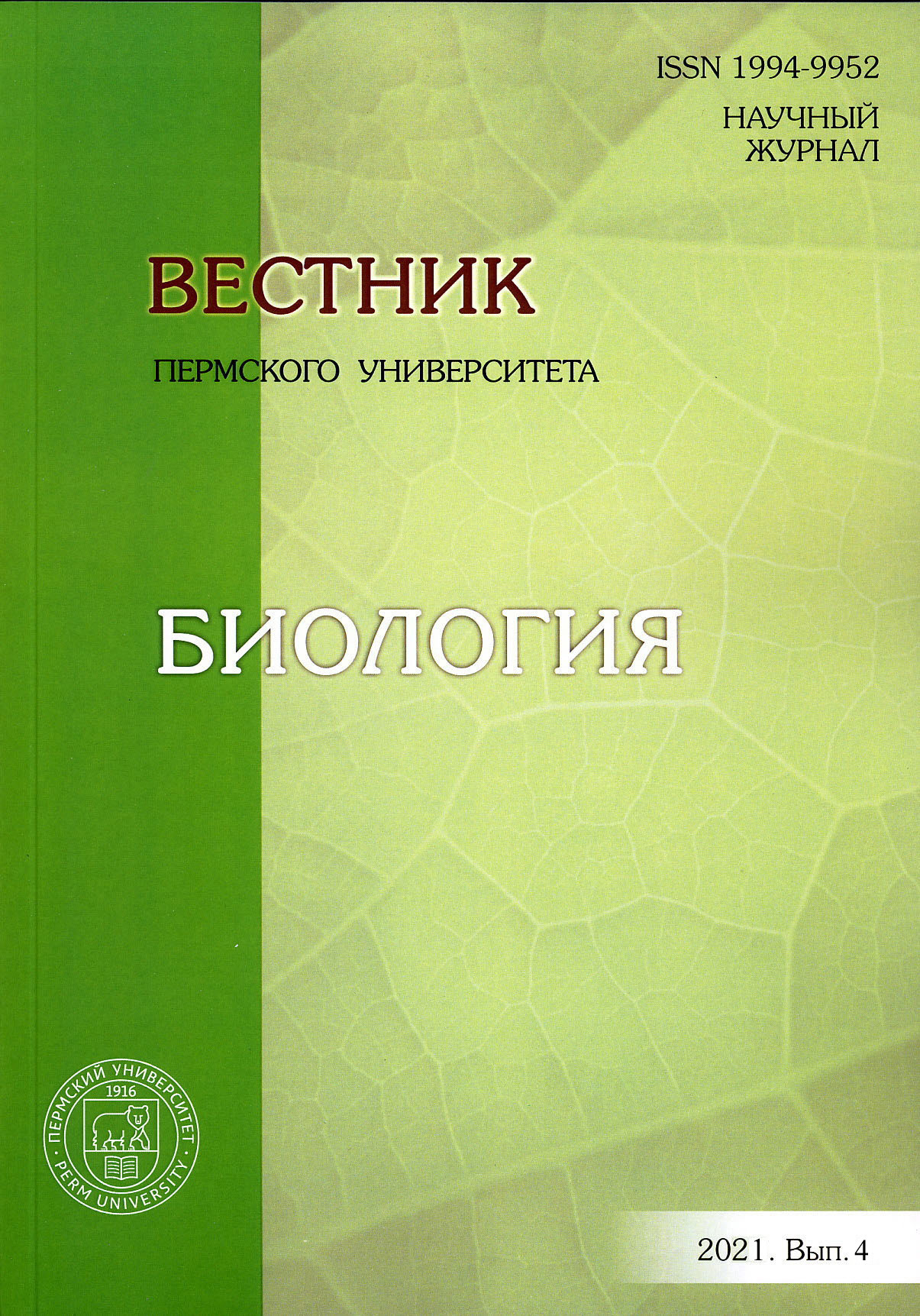Population and genetic features, genomic inbriding and homozy-gosity level for black-and-white and holstein breeds by STR and SNP markers in Russia
Main Article Content
Abstract
Article Details
References
Бекетов С.В. и др. Генетическое разнообразие и филогения пуховых коз центральной и средней Азии // Генетика. 2021. № 7. С. 810–819. DOI: 10.31857/s0016675821070031
Денискова Т.Е. и др. Изучение генетического разнообразия и дифференциации региональных популяций романовских овец по микросателлитным маркерам // Аграрная наука Евро-Северо-Востока. 2018. Т. 64, № 3. С. 75–80. DOI: 10.30766/2072-9081.2018.64.3.75-80
Доклады 42 сессии FAO (Food and Agriculture Organization). Италия. Рим, 2021. С. 2021/2Rev1.
Заид А. и др. Словарь терминов по биотехнологии для производства продовольствия и ведения сельского хозяйства // Продовольственная и сельскохозяйственная организация Объединенных Наций. Рим, 2008. 381 с.
Кузнецов В.М. Инбридинг в животноводстве: методы оценки и прогноза / НИИСХ Северо-востока. Киров, 2000. 66 с.
Кузнецов В.М. F-статистики Райта: оценка и интерпретация // Проблемы биологии продуктивных животных. 2014. № 4. С. 80–109.
Кузнецов В.М. Оценка генетической дифференциации популяций молекулярным дисперсионным анализом (аналитический обзор) // Аграрная наука Евро-Северо-Востока. 2021. № 22(2). С. 167–187.
Кузнецов В.М., Валохина Н.В. Об ограничении инбридинга в малочисленных популяциях молочного скота // Сельскохозяйственная биология. 2010. № 4. С. 55–58.
Недашковский И.С. и др. Оценка племенной ценности быков-производителей голштинской породы по качеству потомства в связи с уровнем гомозиготности по STR маркерам // Вестник Рязанского госу-дарственного агротехнологического университета им. П.А. Костычева. 2019. № 3(43). С. 36–43.
Недашковский И.С. и др. Влияние уровня геномного инбридинга, оцененного по ROH-паттернам, на воспроизводительные качества и молочную продуктивность дочерей, a также спермопродукцию гол-штинских быков-производителей // Достижения науки и техники АПК. 2021. Т. 35, № 3. С. 39–45. DOI: 10.24411/0235-2451-2021-10307.
Об утверждении Доктрины продовольственной безопасности Российской Федерации: Указ Прези-дента РФ № 20 от 21 янв. 2020 г.
Сермягин А.А и др. Оценка геномной вариабельности продуктивных признаков у животных гол-штинизированной черно-пестрой породы на основе GWAS анализа и ROH паттернов // Сельскохозяйственная биология. 2020. Т. 55, № 2. С. 257–274. DOI: 10.15389/agrobiology.2020.2.257rus
Смарагдов М.Г., Кудинов А.А. Полногеномная оценка инбридинга у молочного скота // Достиже-ния науки и техники АПК. 2019. Т. 33, № 6. С. 51–53. DOI: 10.24411/0235-2451-2019-10612.
Chang C.C. et al. Second-generation PLINK: rising to the challenge of larger and richer datasets // Gi-gaScience. 2015. Vol. 4. 7 p. URL: https://doi: 10.1186/s13742-015-0047-8.
Chao A. et al. Online program SpadeR (Species-richness Prediction And Diversity Estimationin R) // 2016. 88 p. URL: https://doi:10.13140/RG.2.2.20744.62722
Curik I. et al. Inbreeding and runs of homozygosity: a possible solution to an old problem // Livest Sci. 2014. № 166. P. 26–34. URL: https://doi: 10.1016/j.livsci.2014.05.034.
Dotsev A.V. et al. PSXII-21 Genome-wide search for genomic regions under putative selection in two russian native cattle breeds using high-density SNP bead chip // J. of Animal Science. 2020. Vol. 98. № 4. P. 242–243. URL: https://doi: 10.1093/jas/skaa278.441
Ferenčaković M. et al. Estimates of autozygosity derived from runs of homozygosity: empirical evidence from selected cattle populations // J. Anim. Breed Genet. 2013. Vol. 130. P. 286–293.
Hartl D.L., Clark A.G. Principles of population. United Kingdom: Sunderland, 1997.
Hedrick P.W. A standardized genetic differentiation measure // Evolution. 2005. Vol. 59, № 8. P. 1633–1638. URL: https://doi: stable/3449070
Jost L. GST and its relatives do not measure differentiation // Mol. Ecol. 2008. Vol. 17, № 18. P. 4015–4026. URL: https://doi: 10.1111/j.1365-294X.2008.03887.x
Khrabrova L.A. et al. Assessment of line differentiation in the Thoroughbred horse breed using DNA mi-crosatellite loci // Vavilov Journal of Genetics and Breeding. 2019. Vol. 23, № 5. P. 569–574. URL: https://doi: 10.18699/VJ19.526
Kim E.S., Cole J.B., Huson H. Effect of artificial selection on runs of homozygosity in U. S. Holstein // PLoS One. 2013. Vol. 8, № 11. 80813 p.
Leutenegger A.L. et al. Estimation of the inbreeding coefficient through use of genomic data // Am. J. Hum. Genet. 2003. Vol. 73. P. 516–523.
Marras G. et al. Analysis of runs of homozygosity and their relationship with inbreeding in five cattle breeds farmed in Italy // Animal Genetics. 2015. Vol. 46, № 2. P. 110–121.
Meirmans P.G., Hedrick P.W. Assessing population structure: FST and related measures // Mol. Ecol. Res. 2011. Vol. 11, № 1. P. 5–18. URL: https://doi: 10.1111/j.1755-0998.2010.02927.x
Peakall R., Smouse P.E. GenAlEx 6.5: genetic analysis in Excel. Population genetic software for teaching and researchan update // Bioinformatics. 2012. Vol. 28. P. 2537–2539.
Purfield D.C. et al. Runs of homozygosity and population history in cattle // BMC Genet. 2012. Vol. 13. 70 p.
Wright S. Evolution and the genetics of populations. Vol.4 Variability within among natural populations. Univ. Chicago, 1978. 590 p.
Zhang L. et al. cgaTOH: Extended approach for identifying tracts of // PLoS ONE. 2013. Vol. 8(3). 57772 p. URL: https://doi:10.1371/journal.pone.0057772.




